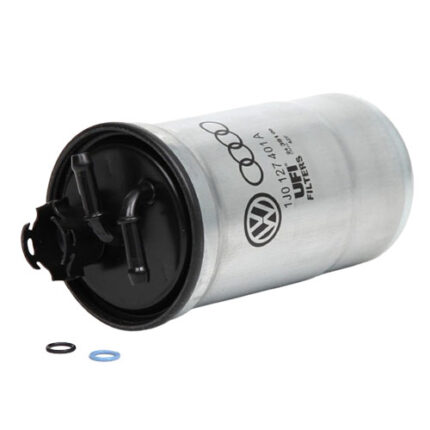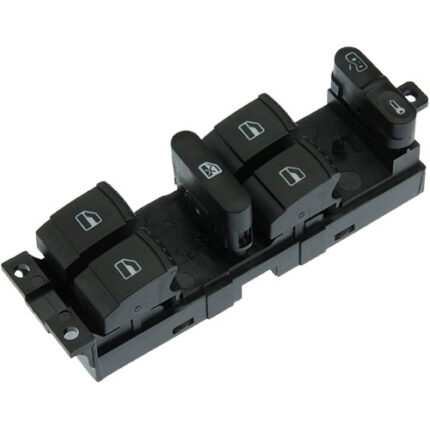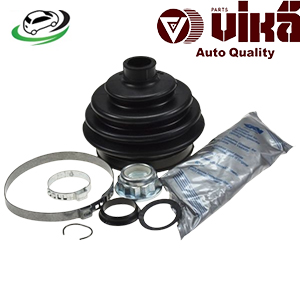Get Outer Right CV Joint Boot Kit AUDI A3 I-1.60/1.9L / TT-1.80 L/3.2L/ VW Golf-1.40L/2.80L/3.20L/ New Beetle 1.40 L 1J0498203
The outer right CV (constant velocity) joint boot is a crucial component in a vehicle’s drivetrain, specifically within the front-wheel-drive or all-wheel-drive systems. It plays a significant role in protecting the CV joint from contaminants and ensuring smooth operation. Understanding its function, construction, signs of wear, and maintenance can help keep your vehicle running smoothly and avoid costly repairs.
Function of the Outer Right CV Joint Boot
The outer right CV joint boot is designed to protect the outer CV joint, which is part of the vehicle’s drive axle. The CV joint is responsible for transferring power from the engine to the wheels while accommodating the movement of the suspension system. The boot encases the CV joint and its grease, serving several critical functions:
- Containment of Grease:
- Lubrication: The CV joint requires constant lubrication to function smoothly. The outer right CV joint boot contains the grease or lubricant that reduces friction and wear within the joint.
- Preventing Leakage: By keeping the grease sealed inside, the boot prevents it from leaking out, which can lead to joint failure if not replenished.
- Protection from Contaminants:
- Dust and Dirt: The boot shields the CV joint from dirt, dust, water, and other contaminants that can cause damage or accelerate wear.
- Debris: It prevents debris from entering the CV joint, which can cause abrasion and premature failure of the joint’s components.
- Allowing for Axial Movement:
- Suspension Travel: The boot is flexible, allowing for the axial movement of the drive axle as the vehicle’s suspension moves up and down.
- Steering Angles: It also accommodates the rotational movement of the drive axle during steering.
Construction and Materials
The outer right CV joint boot is constructed from durable materials designed to withstand the harsh conditions of the drivetrain. Key aspects of its construction include:
- Material:
- Rubber: Traditional CV joint boots are made from high-quality rubber, which provides flexibility and durability.
- Thermoplastic Elastomer (TPE): Some modern boots use TPE, which offers improved resistance to heat, chemicals, and ozone.
- Shape and Design:
- Bellows Shape: Most CV joint boots have a bellows shape, which provides the flexibility needed for the boot to expand and contract with the movement of the axle.
- Clamps: The boot is secured to the CV joint and axle using clamps, typically made of metal or heavy-duty plastic, which help maintain a tight seal.
- Internal Structure:
- Sealing: The boot’s internal lip or sealing surface helps ensure that grease remains contained and contaminants are kept out.
- Reinforcement: Some boots feature internal reinforcement to improve strength and durability, especially in high-performance or heavy-duty applications.
Signs of a Worn or Damaged CV Joint Boot
A damaged or worn CV joint boot can lead to severe issues with the CV joint and the vehicle’s drivetrain. Recognizing the signs of wear early can help prevent more extensive damage. Common indicators include:
- Grease Leakage:
- Visible Grease: If you notice grease on the inside of the wheel or around the wheel well, it may indicate that the boot has a tear or hole.
- Under Vehicle: Look for grease puddles or stains on the ground where the vehicle is parked, which can be a sign of boot failure.
- Cracking or Splitting:
- Surface Cracks: Check the boot for visible cracks or splits, which can result from age, heat, or exposure to harsh conditions.
- Deformation: If the boot appears to be deformed or stretched, it may no longer provide adequate protection to the CV joint.
- Clunking or Clicking Noises:
- Steering Noise: A worn boot can lead to joint damage, causing clunking or clicking noises, especially during turns or while accelerating.
- Suspension Sounds: Listen for unusual sounds coming from the front suspension or drivetrain, which may indicate CV joint issues.
- Vibration or Handling Issues:
- Steering Vibration: A failing CV joint can cause vibrations in the steering wheel, particularly during acceleration or turning.
- Handling Problems: Noticeable changes in handling or steering response may be linked to CV joint or boot issues.
Benefits of CV joint boots
1. Protection of CV Joints
- Contaminant Shielding: CV joint boots serve as a protective barrier between the CV joint and external elements. They prevent dirt, dust, water, and road debris from entering the CV joint, which could otherwise lead to contamination and damage.
- Grease Retention: The boots contain the grease that lubricates the CV joint. This lubrication is essential for reducing friction and wear within the joint, ensuring smooth and efficient operation.
2. Prevention of CV Joint Failure
- Extended Joint Life: By keeping contaminants out and retaining lubrication, CV joint boots help extend the life of the CV joint. This is crucial because CV joints are complex and costly components that are integral to the drivetrain’s functionality.
- Avoiding Expensive Repairs: Preventing CV joint failure through effective boot protection helps avoid expensive repairs or replacements of the CV joint itself, which can be a significant cost.
3. Maintaining Smooth Vehicle Operation
- Reduced Vibration: Properly functioning CV joint boots help ensure smooth operation of the vehicle’s drivetrain. This reduces vibrations felt through the steering wheel and chassis, contributing to a more comfortable driving experience.
- Eliminating Noise: A well-maintained CV joint boot helps prevent unusual noises such as clunking or clicking sounds that can occur when the CV joint is damaged or improperly lubricated.
4. Enhancing Steering and Handling
- Steering Response: CV joints, protected by their boots, allow for smooth and precise steering, especially during turns. This is essential for maintaining responsive and controlled handling of the vehicle.
- Suspension Performance: The flexibility of CV joint boots accommodates the movement of the suspension system, ensuring that the vehicle’s handling and ride quality remain consistent.
5. Improving Safety and Reliability
- Reduced Risk of Breakdown: By preventing CV joint damage, CV joint boots help reduce the risk of unexpected breakdowns and failures, which can occur if the joint becomes contaminated or loses lubrication.
- Enhanced Safety: Properly functioning CV joint boots contribute to overall vehicle safety by ensuring reliable drivetrain performance, which is crucial for safe and predictable vehicle operation.
6. Cost-Effectiveness
- Lower Maintenance Costs: Regular maintenance and timely replacement of CV joint boots can help avoid more costly repairs associated with damaged CV joints. This makes it a cost-effective measure in vehicle upkeep.
- Preventative Maintenance: Investing in CV joint boot maintenance and replacement is generally less expensive than dealing with the consequences of joint failure, which can involve more extensive repairs and higher costs.
Common Issues and Solutions
While CV joint boots are generally durable, they can experience issues due to various factors:
- Torn or Punctured Boots:
- Cause: Sharp objects, road debris, or physical damage can tear or puncture the boot.
- Solution: Inspect the boot regularly and replace it immediately if it is damaged to prevent CV joint failure.
- Heat Damage:
- Cause: Excessive heat from the engine or exhaust can degrade the boot material over time.
- Solution: Use heat shields or protective covers to minimize heat exposure and check for signs of heat-related damage during inspections.
- Improper Installation:
- Cause: Incorrect installation of the boot or clamps can lead to premature failure.
- Solution: Ensure proper installation according to manufacturer specifications and check the boot and clamps for secure attachment.
- Lubrication Issues:
- Cause: Insufficient or contaminated grease can cause premature wear of the CV joint.
- Solution: Use high-quality grease and ensure that the CV joint is properly packed during boot replacement.
Follow us on Facebook for more parts.



